Fix: INET_E_DOWNLOAD_FAILURE
How to Resolve the INET_E_DOWNLOAD_FAILURE Error
You may encounter the INET_E_DOWNLOAD_FAILURE issue due to a corrupt entry of the Credential Manager or corrupt cache/cookies of the website/browser. Moreover, the wrong configuration of the Internet Options of your system may also cause the issue at hand.
Then issue arises when a user wants to access a website (either local or external) through a web browser (mainly, Internet Explorer or Edge) but encounters the following message (although the website was working fine previously):
The connection to the website was reset. Error Code: INET_E_DOWNLOAD_FAILURE
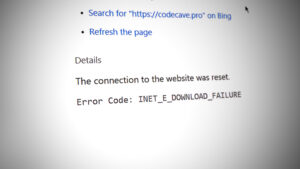
If you encounter the issue with a single browser e.g., Internet Explorer (mainly to access the outdated local websites) or Edge, check if using a different browser (like Firefox or Chrome) sorts out the issue. If you are encountering the current issue with a local website, then check if installing an authentication certificate on the local website solves the issue. Also, check your website code (e.g., the HTTP user agent or security permissions) for a code change that has triggered the issue.
1. Run the Network Troubleshooter
The Inet_E_Download_Failure issue could be a result of a temporary glitch of the network modules of your system and running the network troubleshooter may clear the glitch (which may solve the problem).
- Launch the browser (Internet Explorer or Edge) and navigate to the website.
- Once you encounter the download issue, then click on the Fix Connection Problems button.
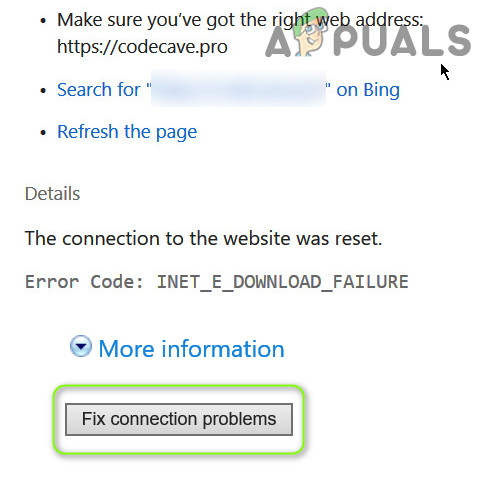
Click on the Fix Connection Problems Button - Now let the Network Troubleshooter complete its course and apply any suggestions by the troubleshooter.
- Once completed, relaunch the browser and check if the download issue is resolved.
If that did not do the trick and your router is a dual-band router (i.e., 2.4 GHz or 5GHz), then check if switching between the Wi-Fi bands (e.g., if using 2.4 GHz, then switching to 5GHz) solves the problem.
2. Delete the Credentials in the Credential Manager
You may encounter the issue at hand if a cached entry in the Credential Manager is corrupt (or hindering the operation of the propagation of the new update by the website). In this scenario, deleting the relevant website entry in the Credential Manager may solve the download problem.
- Click Windows, type: Credential Manager, and open it.
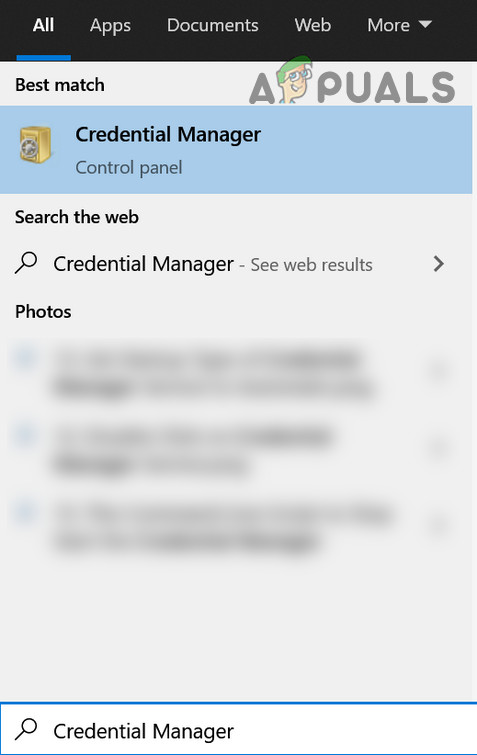
Open Credential Manager - Now check for the website credential in bot tabs (i.e., the Web Credentials and Windows Credentials tabs). If an entry relating to the website is present, expand the entry and click on Remove.
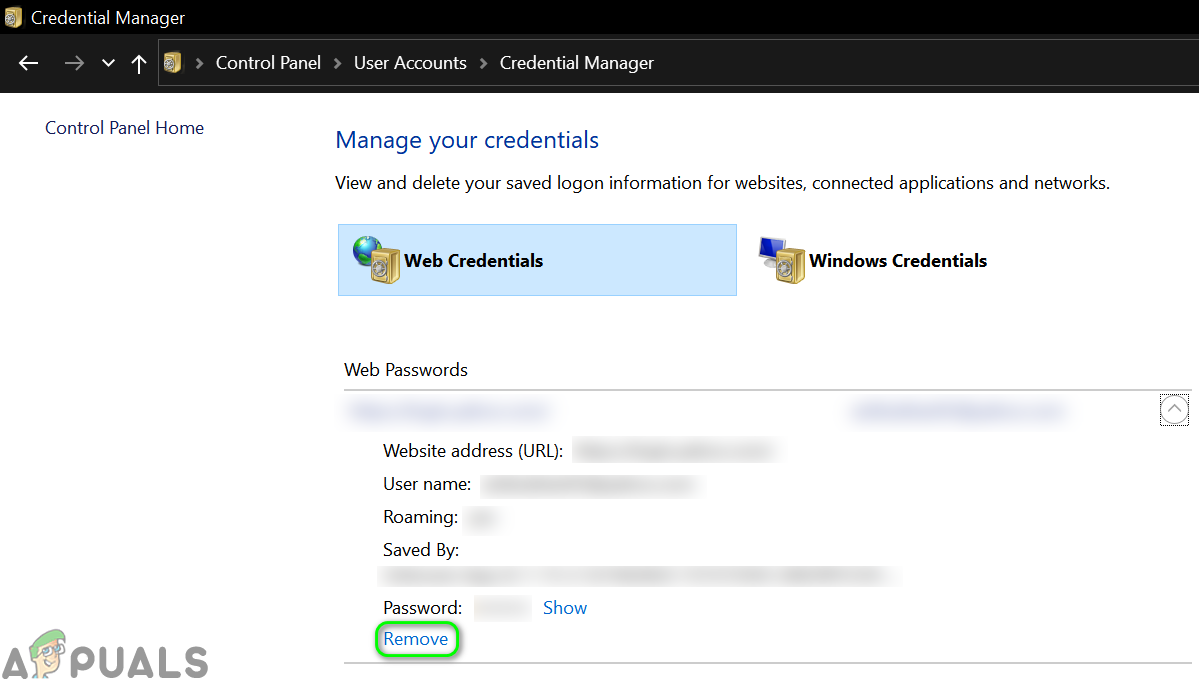
Remove the Credentials from Credentials Manager - Then confirm to delete the entry and reboot your PC.
- Upon reboot, check if the Inet_E_Download_Failure issue is resolved.
3. Clear Cache and Cookies of Internet Explorer or Edge
You may encounter the download issue at hand if the cache and cookies of the Internet Explorer (or Edge) are corrupt. In this context, clearing the Internet Explorer (or Edge) cache and cookies may solve the problem.
3.1 Clear Cache and Cookies of Internet Explorer
- Launch the Internet Explorer and click on the Gear icon (near the top right of the window).
- Now expand Safety and open Delete Browsing History.
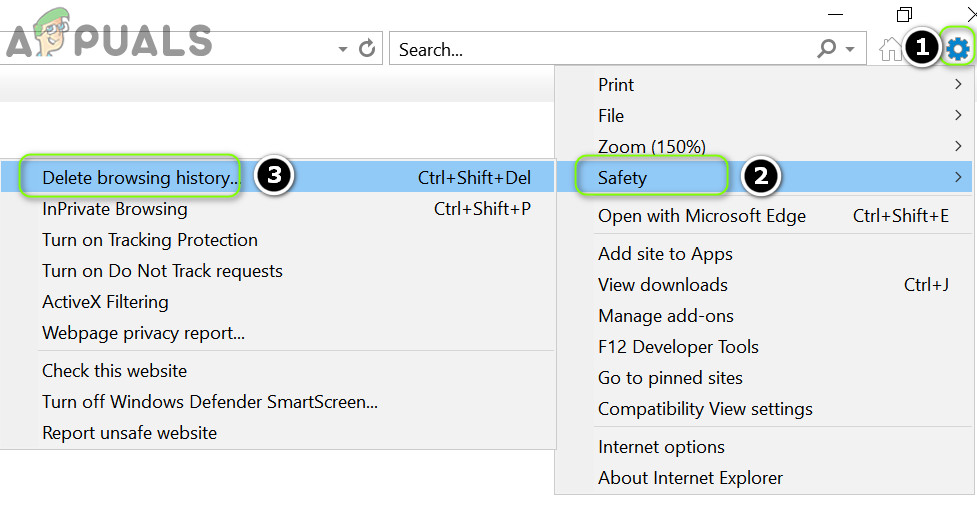
Open Delete Browsing History in the Internet Explorer - Then select all the categories and click on Delete.
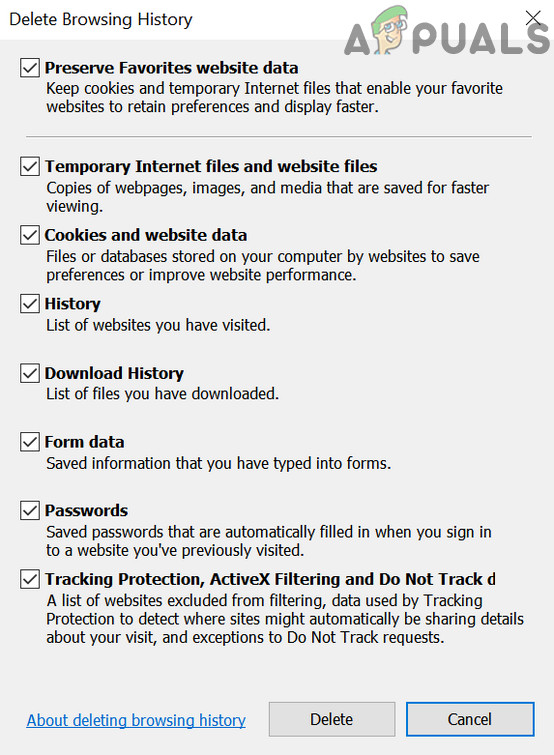
Delete Browsing History in Internet Explorer - Now relaunch the Internet Explorer and check if the websites can be accessed without the issue.
3.2 Clear Cache and Cookies of Edge
- Launch the Edge browser and open its overflow menu (by clicking three horizontal ellipses near the top right of the window).
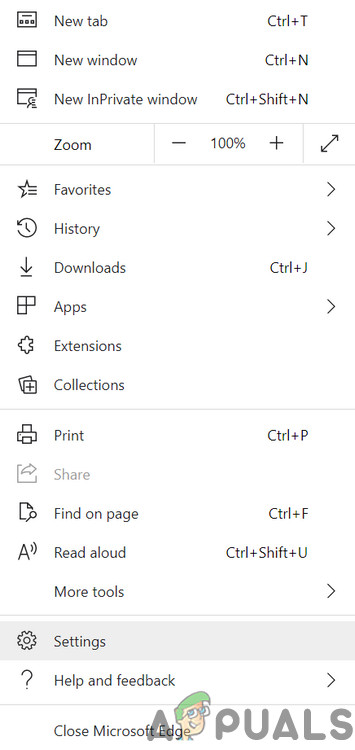
Open Settings of the Edge Browser - Then select Settings and head to the Privacy, Search, and Services tab.
- Now, in the right pane of the window, click on the Choose What to Clear button.

Open Choose What to Clear in the Edge Settings - Then click on Sign Out First (near the bottom of the window) and set the dropdown of Time Range to All Time.
- Now, checkmark the boxes of all categories and click on the Clear Now button.
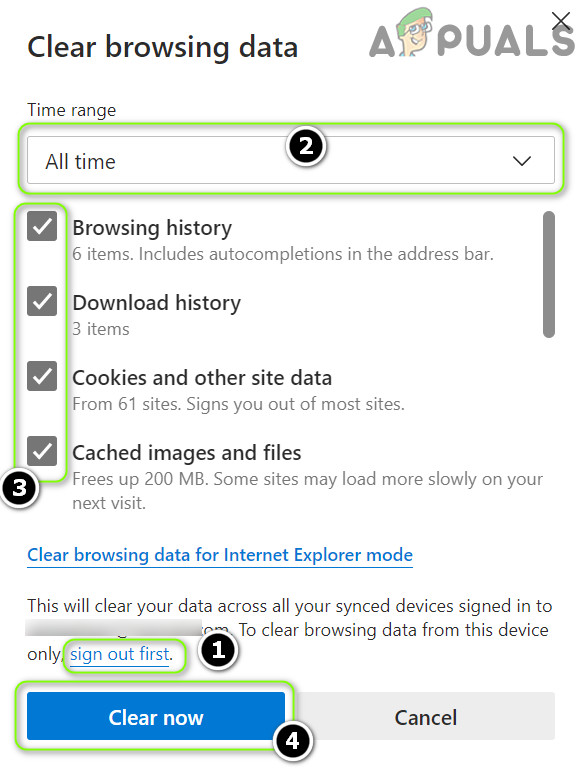
Clear the All-Time Browsing Data of Edge - Then relaunch Edge and check if the system is clear of the download issue.
4. Edit the Advanced Internet Options
You may encounter the Inet_E_Download_Failure issue if the Advanced Internet Options (like Integrated Windows Authentication) are not properly configured. In this case, editing (or resetting) the Advanced Internet Options may solve the problem.
4.1 Disable Integrated Windows Authentication
- Click Windows, type: Internet Options, and then open it.
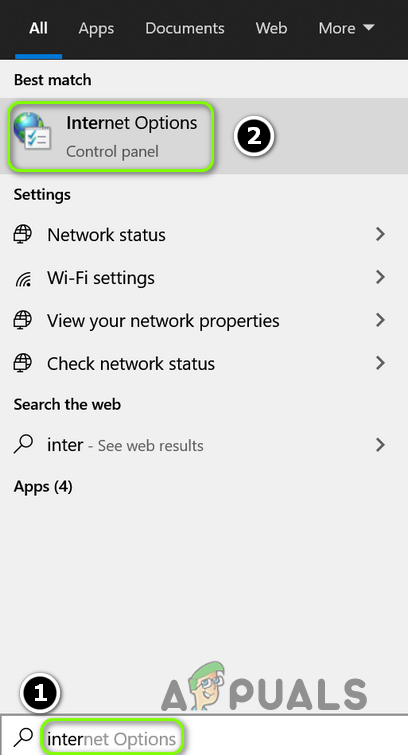
Open Internet Options of Your System - Then navigate to the Advanced tab and uncheck Enable Integrated Windows Authentication (in the Security section).
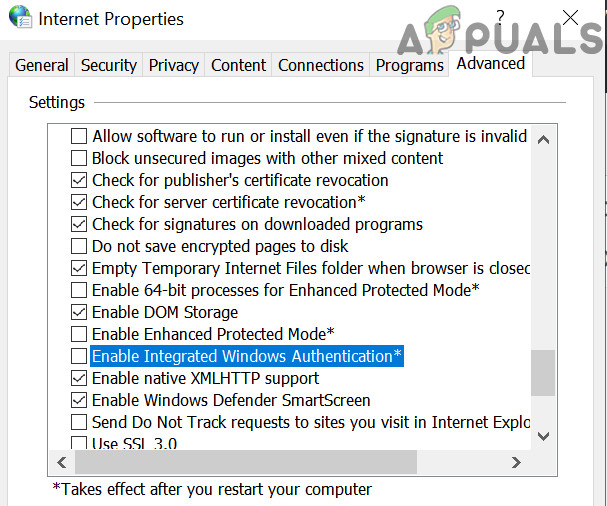
Uncheck Enable Integrated Windows Authentication in the Advanced Internet Options - Now apply your changes and check if the download issue is resolved (you may be prompted for the website credentials whenever a new instance of the Internet Explorer is launched).
4.2 Restore Advance Settings
- If not, open the Advanced tab of the Internet Options (steps 1 to 2) and click on the Restore Advanced Settings button.
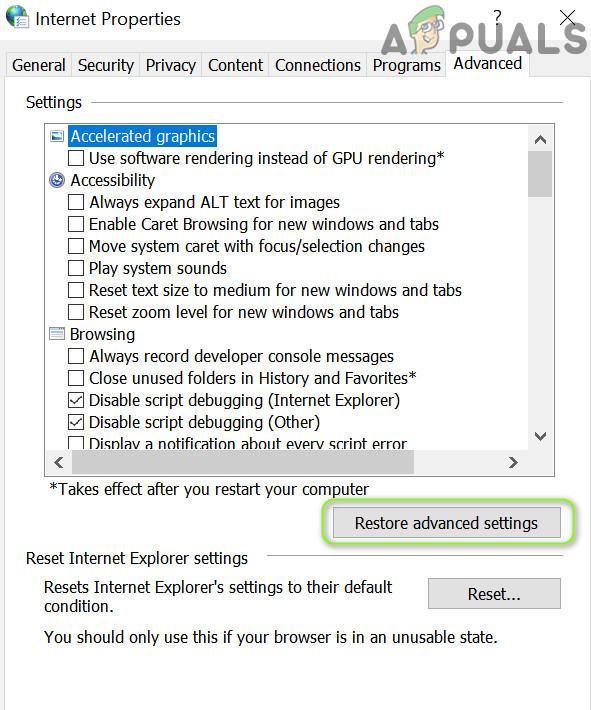
Click on Restore Advanced Settings in Internet Options - Again, in the Advanced tab of the Internet Options, uncheck Do not save encrypted pages to disk (in the Security section) and apply your changes.
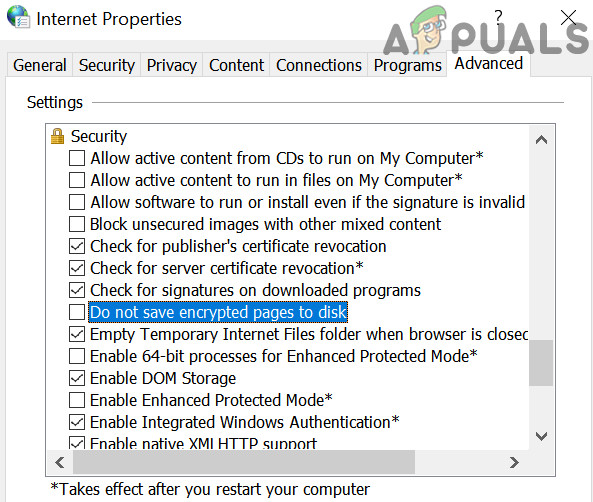
Uncheck Do not save encrypted pages to disk - Now, launch Internet Explorer and check if it is clear of the Inet_E_Download_Failure issue.
4.3 Reset Internet Explorer Settings
- If that did not do the trick, open the Advanced tab of the Internet Options and click on the Reset button (under Reset Internet Explorer Settings).
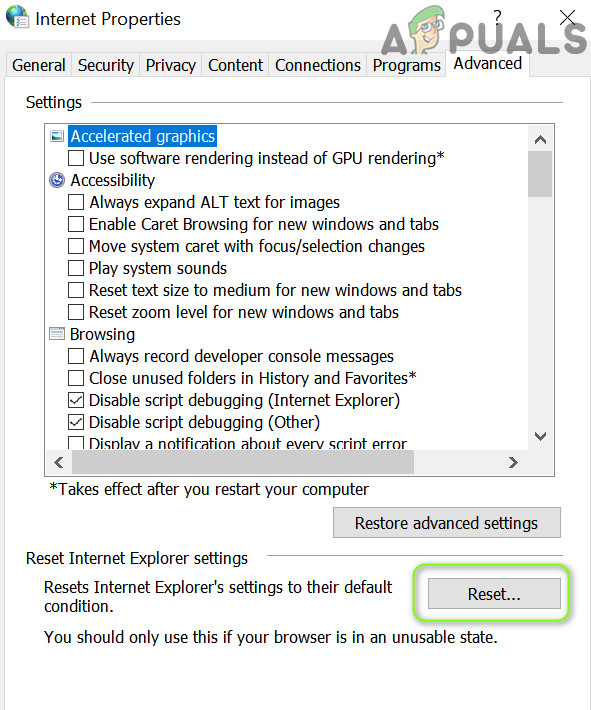
Reset Internet Explorer Settings - Then relaunch the Internet Explorer and check if the Inet_E_Download_Failure issue is resolved.
5. Add the Website to the Trusted Sites in the Internet Options
- If the issue is still there, then check if the website can be opened by using a different protocol of the website (i.e., switching between the HTTP or HTTPS protocols).
- Then open the Internet Options and steer to the Security tab.
- Now select Trusted Sites and click on the Sites button.
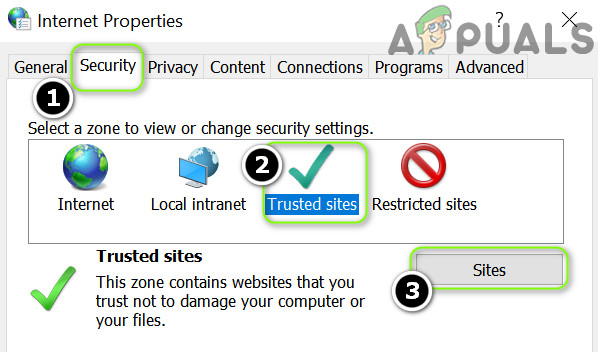
Open Sites in Trusted Sites in Internet Options - Then uncheck (if the website was working fine with HTTP, otherwise, keep it checked) the Require Server Verification (HTTPS:) for All Sites in This Zone and type the website address.
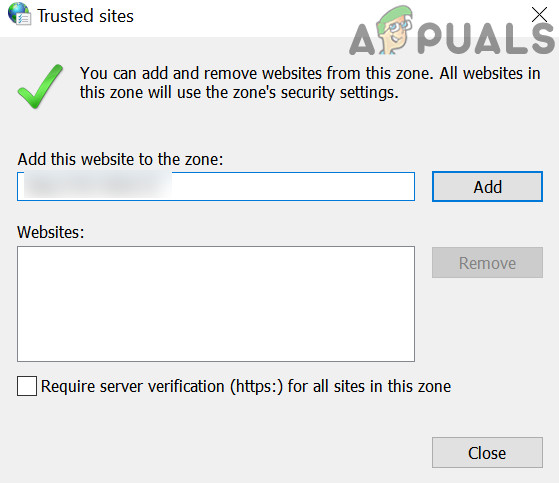
Uncheck HTTPS and Add the Website to the Trusted Sites - Now click on the Add button and close the window.
- Then reboot your PC and upon reboot, check if the browser’s download issue is resolved.
6. Boot Your PC into the Safe Mode and Remove the Conflicting Applications/Extensions
Your system may show the Inet_E_Download_Failure message if an application (or browser extension) hinders your browser’s operation. In this scenario, booting your PC into the Safe Mode and removing the conflicting applications (or browser extensions) may solve the problem.
- Firstly, check if launching the browser without extensions sorts the problem. If so, then find and delete the problematic extension (Ghostery is reported to cause the issue at hand).
- If not, boot your PC into the Safe Mode with Networking and check if the browser is functioning properly.
- If so, then you may perform a clean boot of your PC (to hunt down the problematic application) and check if the browser issue is resolved.
- If so, then you may enable the processes, services, or applications (disabled during the clean boot process) one by one to find out the problematic entry.
- Once the problematic one is found, you may uninstall it (or if it is essential, then you may disable it at the system’s startup) and check if the download issue is resolved.
Following applications are reported by the users to create the download issue for them (if you have one or a similar one, then uninstall it):
- Ghostery Midnight Application (or Ghostery browser extension)
- BitDefender Antivirus
- SonicWALL TZ500 Firewall
- VPN Applications (like Psiphon)
For illustration, we will discuss the process for the Bitdefender antivirus.
- Right-click Windows and open Apps & Features.
- Now expand Bitdefender and click on Uninstall.
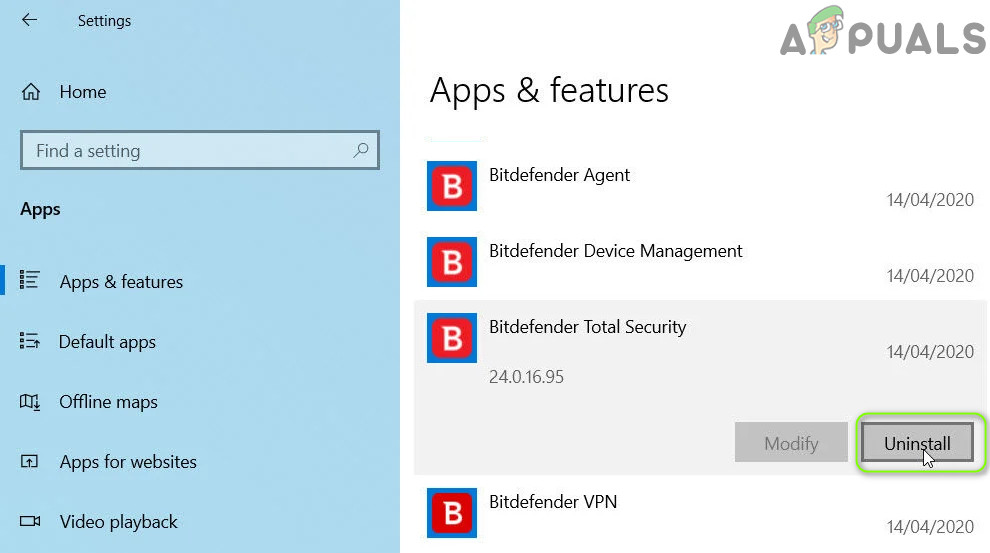
Uninstall Bitdefender - Then confirm to uninstall the Bitdefender antivirus and let the process complete.
- Now reboot your PC and upon reboot, check if the download issue is resolved.
7. Use the Command Prompt
If none of the solutions did the trick for you, then using the Command Prompt to enable debugging of the Edge browser for the localhost website may solve the problem.
- Click Windows, key-in: Command Prompt, and right-click on Command Prompt. Then select Run as Administrator.
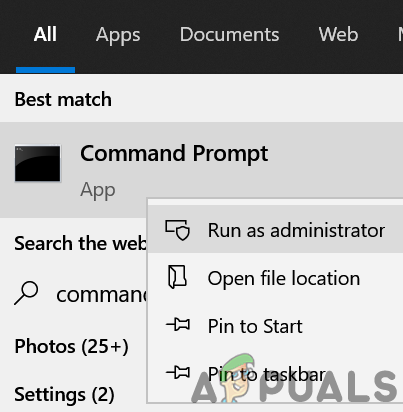
Open Command Prompt as Administrator - Now execute the following cmdlet (if you encounter a wrong parameter error, then repeat the below command without quotes):
CheckNetIsolation LoopbackExempt -a -n="Microsoft.MicrosoftEdge_8wekyb3d8bbwe"

Enable Loopback in the Edge Browser Through the Command Prompt - Then reboot your PC after exiting the Command Prompt and upon reboot, hopefully, the Inet_E_Download_Failure issue is resolved.
If the issue persists, then you may have to reset your PC to factory defaults (make sure you chose the Keep Windows Settings, Personal Files, and Apps option) to solve the download issue.





